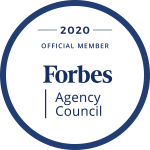Many companies will invest considerable effort seeking positive publicity in influential media sources, and then fail to benefit from the masthead value of that exposure.
Originally a seafaring term relating to the brass plate attached to a ship’s mainmast that memorialized its owners and builders, a publication’s masthead lists the members of its current editorial and production staff. The industry term “masthead value” can be defined broadly as the level of stature, credibility and influence associated with a specific media source. The Wall Street Journal, for example, has high masthead value; the Wall Street Transcript…not so much.
Masthead value can be relative. A respected trade or professional publication in a particular industry may have greater masthead value – in terms of its influence with a particular audience – than well known publications such as the Wall Street Journal or New York Times. For example, physicians are likely to assign the New England Journal of Medicine greater masthead value than the Journal or Times on topics relating to clinical care of patients.
Masthead value should drive your publicity strategy. A placement from a single highly respected source can be far more valuable, in terms of influence, than a dozen hits with low masthead value. Because gaining inherent 3rd party endorsement is the end goal, in the publicity game quality always trumps quantity.
Here are 5 ways to leverage media placements with strong masthead value:
- Put high value placements directly in front of your target audiences – Even if your coverage appears on the front page of the Wall Street Journal or makes the cover of Fortune magazine, don’t assume it will be read by clients, prospects, referral sources…or even by your employees. There’s simply too much offline and online noise to ensure that any media exposure on its own will gain the attention you’re seeking. If you’ve developed an internal CRM-driven discipline to communicate directly and regularly with target audiences, then you’re well prepared to apply that distribution capability to increase the chances that decision makers will notice, remember, and respond to your high value exposure. (Lacking that discipline, your time may be best spent building an effective distribution capability, in advance of seeking additional publicity.)
- Avoid “Hey, look at me!” self-promotion – Pickup in a media source with high masthead value provides some reason for high-fives internally, but it should not serve as a platform for self-promotion. Extreme examples of this error include companies that issue a press release, or generate Twitter and Facebook postings to announce, for example, that their CEO has been profiled in Inc. magazine. This type of over-reaction to high value publicity suggests to target audiences that you were surprised to receive the media endorsement, and therefore may not have really deserved it. The key is to showcase the media exposure in a relevant context (you may need to create this), to make the media placement secondary to the underlying content (such as the reasons why your CEO was profiled in Inc.) and to pull off these tasks with a matter-of-fact level of self-confidence.
- Rank graphics over content, in terms of impact – Most people are surface readers. Online visitors are more likely to scan images, heads, subheads and captions, than they are to read body copy. (Long blocks of copy on websites that require scrolling are rarely read.) If you’ve earned a placement with high masthead value, you can increase the likelihood of your company being associated with the “endorsing” publication by displaying its logo with the capsule description and link to the placement. To be clear: the critical element is the logo. If your placement is from the New York Times, for example, you should replicate the logo – as it appears on the front page of that publication. Based on how people gather information, simply typing, “from The New York Times,” or a similar attribution, is about 75% less effective than actually depicting the New York Times logo.
- Prominently showcase high value placements – If you’ve invested and succeeded in generating media placements with high masthead value, why make it difficult for target audiences to find them on your website? Rather than burying influential publicity in an obscure “In the News” section that requires multiple clicks for visitors to locate, you can amortize your investment in publicity (and perhaps improve your website’s bounce rate in the process) if you create a location for these high value items on your home page. This can be accomplished by applying a design format in which the content either remains fixed or is refreshed regularly. For formats that supply current information, extend the shelf-life of each placement by not including its publication date.
- Cite a relevant endorsement on your home page – One of the most effective ways to merchandise high-value media exposure is to select a very brief, relevant phrase from the coverage, for placement in a prominent position on your home page. Here’s a hypothetical example:
“…a recognized authority in Big Data technology.”
–Wired Magazine
By limiting your publicity efforts to media placements with high masthead value, and by ensuring that those placements are effectively merchandised through direct communication, social media tools and proper website visibility, PR practitioners will spend far less time worry about the ROI of public relations. The fruits of their labors will be self-evident in tangible business metrics, ranging from lead generation to high search engine page rankings.









